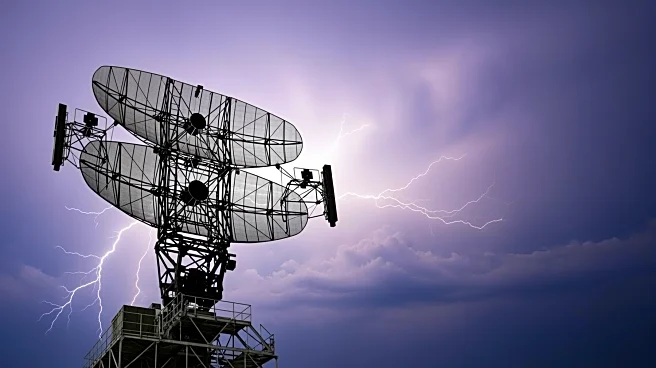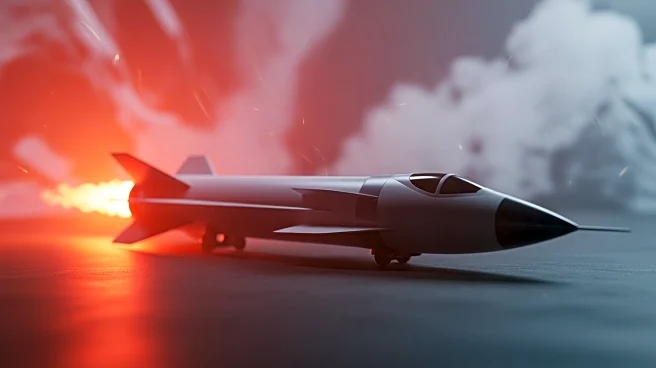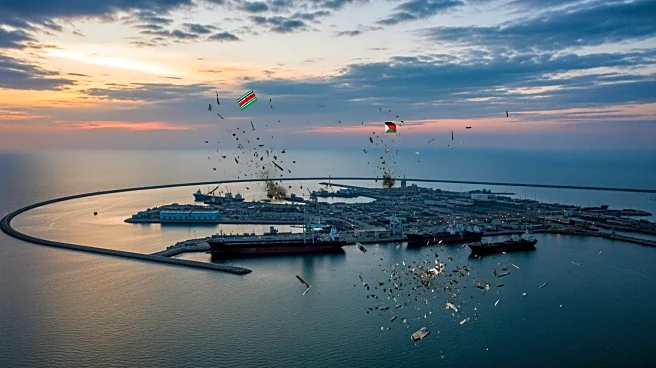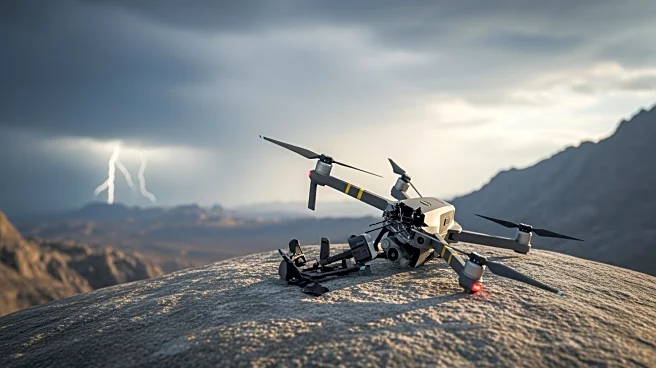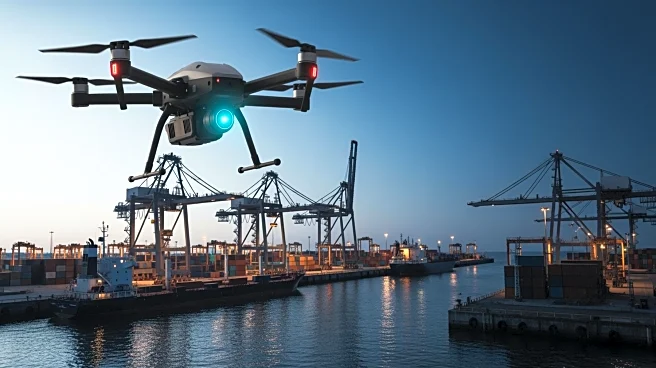What's Happening?
On November 14, 2025, Ukrainian drones launched an attack on the Russian port city of Novorossiysk, specifically targeting the Sheskharis oil complex. This facility is a significant endpoint for pipelines
operated by Russia's state-run Transneft, the world's largest oil pipeline company. The strike resulted in substantial damage to infrastructure and ignited a large fire, which was later reported to have been extinguished. Additionally, a civilian vessel in the port was hit during the mass UAV strike, injuring three crew members. Russian air defense units claimed to have shot down 66 drones over Krasnodar Krai during the incident.
Why It's Important?
The attack on the Sheskharis oil complex underscores the strategic targeting of Russian energy infrastructure by Ukraine, which considers these facilities valid military targets due to their role in funding Moscow's war efforts. The incident highlights the ongoing conflict's impact on global energy markets, as disruptions in Russian oil exports can lead to fluctuations in oil prices and affect international supply chains. Furthermore, the strike reflects the escalating use of drone warfare, which poses significant challenges to traditional air defense systems and raises concerns about the security of critical infrastructure.
What's Next?
The aftermath of the attack may prompt Russia to bolster its air defense capabilities around key infrastructure sites, potentially leading to increased military spending and strategic adjustments. The international community, particularly countries reliant on Russian oil, may face heightened uncertainty regarding energy supplies, prompting discussions on diversifying energy sources. Additionally, the incident could lead to intensified diplomatic tensions between Russia and Ukraine, with potential repercussions for ongoing peace negotiations and regional stability.
Beyond the Headlines
The use of drones in modern warfare raises ethical and legal questions about the conduct of hostilities and the protection of civilian lives. As drone technology becomes more accessible, the risk of proliferation to non-state actors increases, potentially leading to more frequent and unpredictable attacks on critical infrastructure. This development may necessitate new international regulations and agreements to address the challenges posed by unmanned aerial systems in conflict zones.


